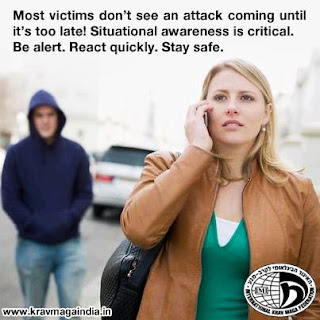- John Napier (1550-1616), Hands
As we emphasize during our self defense classes, assailants often won't announce their intentions, preferring the advantage of surprise. Some situations, however, can be anticipated. One way to anticipate a potential assault is by understanding body language - how a person's body expresses aggression.
So imagine someone looking at you. Perhaps they are across a room, approaching you, or very close. Maybe they are saying something to you or are staying silent.
Whatever the situation, observe their body language.
Do they display any of these 6 signs of aggression?
- Clenched hand(s)
- Rapid gestures.
- Body shakes
- Clenched teeth/jaws/pursed lips/ a taut neck
- Eyes squinting, staring, glaring as if they are challenging you or "sizing you up".
- A visible and sudden change in the their breathing.
Of course, these indicators do not guarantee an impending assault. They should, however, alert you to the possibility. Leave the scene if you can. Look for escape routes. Alert a friend...
In other words, be prepared.
Stay safe,
Christopher Gagne
Lead Instructor and Owner
International Krav Maga Federation(IKMF), Toronto
416-657-1028
Lead Instructor and Owner
International Krav Maga Federation(IKMF), Toronto
416-657-1028


